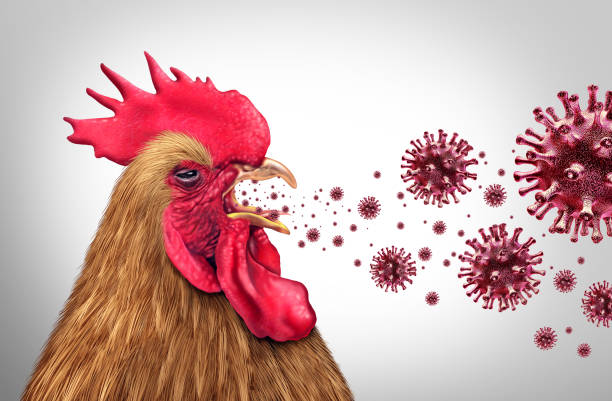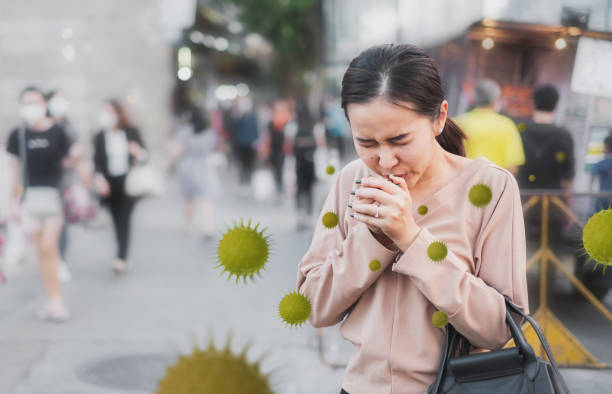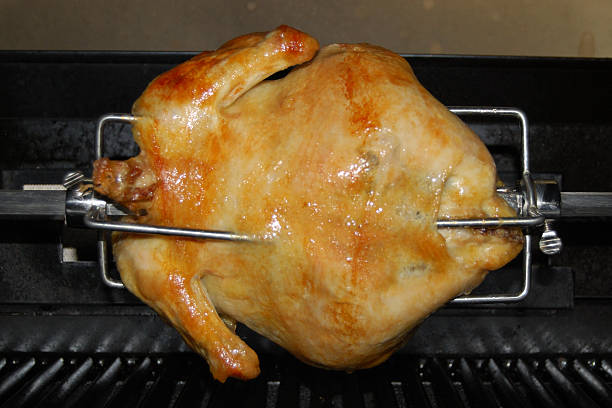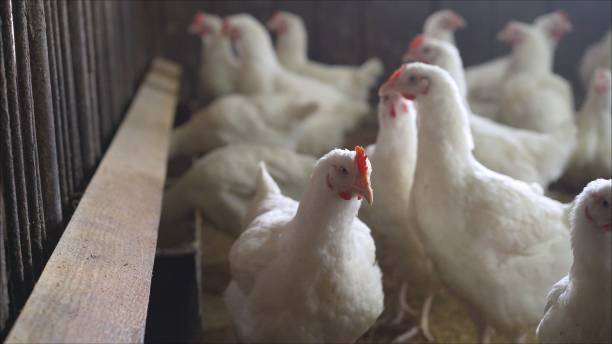Highly Pathogenic Avian Influenza (HPAI) H5N1 virus is a subtype of the influenza A virus that primarily affects birds but has also been known to infect mammals, including humans. First identified in domestic waterfowl in Southern China in 1996, the virus has since caused significant outbreaks across Asia, Europe, Africa, and North America, leading to substantial economic losses in the poultry industry and raising public health concerns due to its zoonotic potential (Centers for Disease Control and Prevention [CDC], 2024a).
Virology and Transmission
H5N1 is characterized by its high pathogenicity in avian species, often leading to severe disease and high mortality rates. The virus is classified based on the properties of its hemagglutinin (HA) and neuraminidase (NA) proteins, with H5 and N1 denoting specific subtypes. Transmission among birds occurs through direct contact with infected individuals or contaminated environments, such as water sources or feed. The virus can survive in low-temperature environments, facilitating its spread among migratory bird populations (World Health Organization [WHO], 2024).
Human infections, although rare, have been primarily associated with close contact with infected live or dead birds or H5N1-contaminated environments, such as live bird markets. There have been instances of H5N1 virus detections in individuals exposed to infected animals or their environments who did not exhibit symptoms. While human-to-human transmission remains limited and inefficient, the potential for the virus to adapt and acquire this capability poses a significant public health concern (WHO, 2024).
Global Spread and Evolution
Since its emergence, H5N1 has undergone genetic diversification, leading to the development of multiple clades and subclades. Notably, the clade 2.3.4.4b variant has become predominant globally, causing widespread outbreaks in wild birds and poultry. The virus’s ability to reassort with other influenza viruses has led to the emergence of new subtypes, such as H5N6 and H5N8, further complicating control efforts (CDC, 2024b).
The global spread of H5N1 has been facilitated by migratory bird patterns, with the virus detected in wild birds across multiple continents. Recent reports indicate that all continents except Australia have reported cases of H5N1, underscoring the virus’s extensive reach (Henderson, 2025).
Impact Of the H5N1 Virus on Mammals
While H5N1 primarily affects avian species, there have been increasing reports of infections in mammals. Notably, outbreaks among farmed fur animals, seals, sea lions, and detections in other wild and domestic animals such as foxes, bears, otters, raccoons, cats, dogs, cows, and goats have been documented. These incidents highlight the virus’s expanding host range and the potential risks to other species, including humans (WHO, 2024).
Human Health Implications
Human infections with H5N1 are rare but often severe, with a high case fatality rate. Symptoms typically include high fever, malaise, cough, sore throat, and muscle aches, progressing rapidly to severe respiratory illness and, in some cases, neurologic changes. From 2003 to 2024, approximately 950 human cases have been reported globally, with over 400 resulting in death, indicating a mortality rate exceeding 50% (Wilkins, 2025).
The WHO emphasizes the importance of monitoring the virus’s evolution due to the potential for it to acquire the ability to transmit efficiently between humans, which could lead to a pandemic (WHO, 2024).
Prevention and Control Measures
Controlling H5N1 requires a multifaceted approach, including surveillance, biosecurity measures, vaccination, and public awareness. Enhanced biosecurity protocols in poultry farms are essential to prevent outbreaks. However, vaccination strategies vary globally due to concerns about trade restrictions and vaccine efficacy. For instance, the United States has been hesitant to vaccinate poultry on a large scale, primarily due to export concerns, while focusing on biosecurity measures and surveillance (Jameson, 2025).
Recent developments include the conditional approval of updated bird flu vaccines to protect poultry against H5N1, reflecting ongoing efforts to enhance preparedness (Henderson, 2025).
Conclusion
The H5N1 virus remains a significant threat to both animal and human health. Its ability to cause severe disease in birds and humans, coupled with its expanding host range, necessitates continued vigilance. Strengthening surveillance systems, enhancing biosecurity measures, and fostering international collaboration are crucial steps in mitigating the risks associated with this highly pathogenic avian influenza virus.
References
Centers for Disease Control and Prevention. (2024a, April 26). Technical report: Highly pathogenic avian influenza A(H5N1) viruses. U.S. Department of Health & Human Services. https://www.cdc.gov/bird-flu/php/data-research/report-4-26-2024/index.html
Centers for Disease Control and Prevention. (2024b, June 17). Emergence and evolution of H5N1 bird flu. U.S. Department of Health & Human Services. https://archive.cdc.gov/www_cdc_gov/flu/avianflu/communication-resources/bird-flu-origin-infographic.html
Henderson, S. (2025, March 5). Deadly H5N1 bird flu strain has hit all but one continent. Axios. https://www.axios.com/2025/03/05/bird-flu-h5n1-australia-only-continent-no-cases
Jameson, T. (2025, March 5). Here’s why the U.S. is not working to vaccinate birds against avian flu. MarketWatch. https://www.marketwatch.com/story/heres-why-the-u-s-is-not-working-to-vaccinate-birds-against-avian-flu-b5daa56d
Wilkins, R. (2025, March 5). Start planning for bird flu pandemic now, expert warns amid fears highly pathogenic virus spreads by wind. The Sun. https://www.thesun.co.uk/health/33717393/bird-fu-pandemic-now-mutant-bug/
World Health Organization. (2024, May 16). Influenza A(H5N1): Questions and answers. https://www.who.int/news-room/questions-and-answers/item/influenza-h5n1




